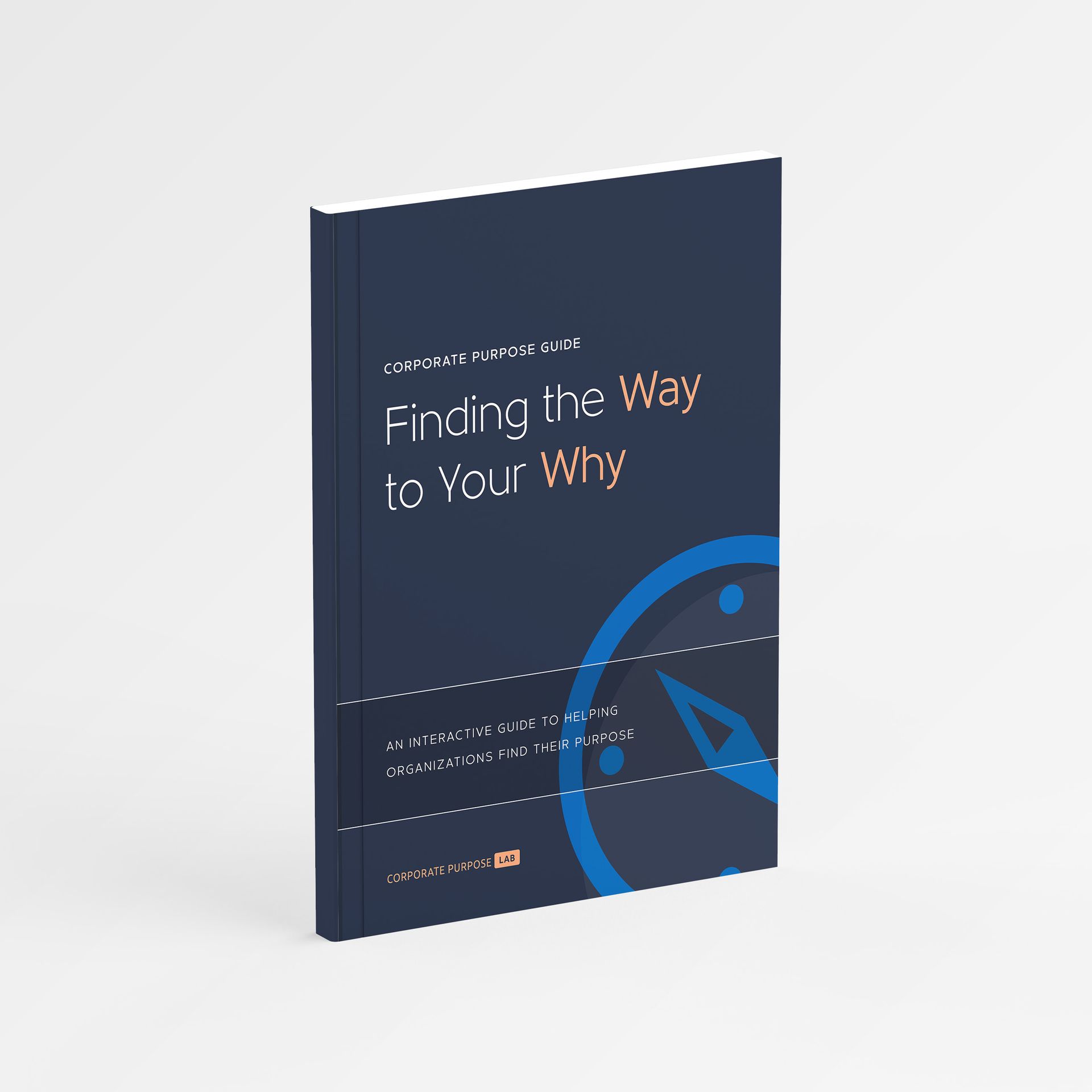Four Characteristics of Purpose-Driven Companies
Stay up-to-date on trends shaping the future of governance.
Moving from product-driven, to purpose driven
Rick Warren’s book The Purpose Driven Life has sold 50 million copies worldwide and has been translated into over 130 languages. That book, and others like it, have channeled the deeply felt desire to find and live out individual purpose.
But can companies be purpose-driven too?
Framing the purpose of a company as beyond making profits for shareholders alone is age-old, but the move to state corporate purpose explicitly is newer. Stating purpose is part of a deeper transformation of a growing number of companies–from being product-driven to becoming purpose-driven.
Being explicit about purpose is part of an emerging approach to corporate sustainability which is being promoted by investors and, in some cases, even required by regulators. But being purpose-driven is not simply compliance (though it includes that), nor vague good intention expressed in a purpose statement. Being purpose-driven means aligning governance, strategy, and organizational culture; and setting metrics to measure success. This takes an intentional investment of time and resources.
But the return on that investment can and should be measured; and there are good reasons to believe that it will be positive. This is because the benefits of being purpose-driven flow through two channels:
- A finance channel where investors and increasingly also lenders will assess the extent to which clarity of purpose promotes sustainability; and
- An employee channel where purpose-driven companies are better able to retain staff and attract new talent, while potentially improving general productivity.
But what does it mean to be purpose-driven in practice? Let’s explore a few key characteristics of purpose-driven companies.
1) Purpose-driven companies have a clear answer why they do what they do
According to sports company Under Armour, Purpose “sits at the intersection of ‘Who we are’ and ‘The Need in the World’ we can fulfill”. Purpose is usually summarized in a clear, cogent purpose statement. While the statement itself is usually quite short, a lot of thought and engagement goes into developing and testing it. It is distinct from a mission statement, which summarizes what a company does, or a vision statement, which sets out what it wants things to look like at a future point when it is successful.
A good purpose statement provides a foundation on which those other aspects of corporate identity can be built.
A purpose statement is not forever, because purpose can shift over time. But to serve as a north star pointing beyond the typical three to five year planning horizon, it should normally be designed with a ten year life in mind.
UPS is a large and venerable company with a 100 year history behind it. However, when CEO Carol Tome took over in 2020, she soon saw that while UPS had a well defined sense of what it did, it needed to reconsider why it did it. The result was its first corporate purpose statement: “Moving our world forward by delivering what matters.” As Tome describes in a 2022
podcast
with Andy Stanley, a key test of the relevance of this new statement came when they had to decide whether delivering ‘vape’ products was part of ‘what matters for moving the world forward’.
Although UPS had derived hundreds of millions of dollars of revenue from this line of business, one result of clarity of purpose was that the company decided not to carry these anymore because of the mounting evidence of causing health risks. Instead, they took pride in the crucial role the company had played in the logistics of Covid vaccine distribution in 2021-22: a good example indeed of what mattered to the battered world back then. Although most companies may not face quite that sharp a choice arising from defining their purpose, Tome’s view is that you don’t know that you are on purpose until it costs you something.
Learn how to define your company's purpose with the FREE Corporate Purpose Guide.
Sent straight to your inbox as a PDF document.
2) Purpose-driven companies align their values with their purpose
While discovering and defining the “why” of your company’s existence is the first step to becoming purpose-driven, it’s not enough. There also needs to be an answer to HOW this is lived out in day-to-day behavior, especially among the employees who represent the company in day-to-day interactions. Answering the ‘how,’ of course, is the role of the value statement.
Like purpose statements, value statements can be vague and boring. Many companies have lists with words in common, such as “integrity,” “communication” or “innovation”.
Netflix is a company known for its distinct corporate culture. Its list of
9 valued behaviors (link added in the comments) actually includes those very three words, adding a few others such as courage, selflessness and judgment. But values like these mean nothing if they’re left as vague, abstract words. We must translate them into desired behaviors.
Netflix, for example, defines each value in terms of specific behavior patterns. “Innovation” at Netflix looks like this:
- You develop new ideas that prove impactful
- You look for every opportunity to reduce complexity and keep things simple
- You challenge prevailing assumptions, and suggest better approaches
- You are flexible and thrive in a constantly evolving organization
Not only does that list make the value clearer, it also makes it more measurable and accountable: it is possible to ask questions like “In the past 3 months, when did you challenge prevailing assumptions and suggest a better approach?” And then “What happened when you exhibited this behavior?”
For a purpose-driven company, values should enable the achievement of the overall purpose. Netflix exists “to entertain the world.” Achieving and maintaining global scale clearly requires innovation in the ways described.
While corporate purpose is something that the board of a company must ultimately decide, values need to be co-decided between boards and employees. Unless employees have strong agency in creating the values and giving content to them, there is little chance that they will actually shape culture; instead, they will just decorate a few office walls. The board should also be guided by these values, but since non-executive directors aren't involved in the day-to-day operations, their main role is to check if the values actually reflect the company's real culture. And if not, to ask why.
3) Purpose-driven companies look for a long-term ROI on purpose
Having purpose reinforced by aligned values should result in much more than just a fuzzy, warm feeling of satisfaction. The effects of positive purpose are measurable and should be measured. There should be a clear business case to invest the time and resources into defining and reinforcing purpose. But how to make this case?
First, the easier part–calibrating the investment. Defining and reinforcing purpose takes time, typically 3-6 months for a mid-sized company to engage stakeholders and understand their perceptions. Employee engagement through workshops requires planning and time away from work. These "shadow" costs can be estimated using the average time spent and the cost of employment. External support from a trusted advisor adds "real" costs, varying based on scope. For a mid-sized company with 340 employees, identifying purpose may cost around $250,000.
And defining purpose is only the end of the beginning of the purpose journey: to derive any value from the initial investment, it will have to be reinforced through spending ongoing time and attention on it, which may involve an ongoing time equivalent to $200,000.
In our example, is the upfront investment of around $90k in ‘hard’ costs and $160k in staff time, with an ongoing commitment of $200k a lot or a little? To answer this means measuring the return. Calculating return on purpose is challenging but feasible.
Defining purpose benefits employees, reducing attrition by increasing their sense of connection and alignment to what the company is doing. Attrition costs can be measured in terms of the cost of hire and the time taken for new hires to be as productive as the persons whom they replace. In our example, this amounts to $30,000 to fill an average vacancy–a conservative number considering Gallup has estimated the total cost to fill a vacancy ranges between 50% to 200% of salary.
Most companies already track staff attrition rates so your company may already have a baseline. Assuming an attrition rate of 20% (below 2021 US average), in our example, 68 replacements occur yearly. If attrition decreases by one-eighth to under 18%, the net present value (NPV) of the purpose investment over five years would be positive, with a 19% Internal Rate of Return. That sounds like a strong business case!
And that’s only one benefit; others like increased productivity and attracting younger talent may be even stronger.
It is true that other factors can affect attrition rates, like market conditions and pay scales. However, to get a closer handle on the extent to which a change in attrition is attributable to clearer purpose, you could monitor the average employee purpose Net Promoter Score (epNPS) by asking employees on a regular basis a question like: on a scale of 0 to 10, would you recommend this company to potential employees based on its sense of purpose? If you baseline this measure and track it over time, it will give a good sense of how employees are responding.
4) Purpose-driven companies intentionally narrow the purpose gap.
As you track the epNPS indicator by staff level within the organization, decomposing by level reveals the extent of the purpose gap within your company. The purpose gap can take two different forms. A vertical purpose gap exists when senior staff on average are much more likely to derive a sense of purpose from their work than are frontline employees or junior staff. McKinsey research suggests that this gap is common in many companies in the US today.
A horizontal purpose gap exists when an individual reports a low degree of alignment between personal purpose and corporate purpose. This gap can exist at any level of the organization, and may serve as a predictor of potential for attrition.
Both purpose gaps can be closed through intentional action. Closing the vertical gap requires intentional effort to listen to how frontline staff perceive purpose. This may mean taking more time to engage these staff members to reduce the risk of ‘head office’ confirmation bias in identifying and shaping purpose. Closing the horizontal gap may mean helping employees define their personal sense of purpose through training or even coaching support. If they don’t have a sense of their own purpose, it will likely be harder for them to connect truly with the company purpose. However, there is a risk that helping staff define personal purpose may result in increased attrition in the short run as they discover that their purpose lies elsewhere. But filling those gaps with new hires who are aware of and aligned to the corporate purpose is likely to pay off substantially over time through higher productivity.
Now what?
By now, you should be aware that defining your company’s purpose is incredibly important for becoming a company with a thriving future. The Corporate Purpose Lab has produced a
free Corporate Purpose Guide to assist you to understand better what the journey entails. You can access your download of the guide here as your next step towards becoming purpose-driven.

Lead your company into a thriving future with the FREE Corporate Purpose Guide
Sent straight to your inbox as a PDF document.
At Integral, we provide ESG Consulting advice, evaluation, facilitation, mentoring and coaching services to develop governance systems that fit your organization’s purpose and stage of growth. To explore further how we can help you,
read about our services, or
set up a free consultation.
S H A R E










